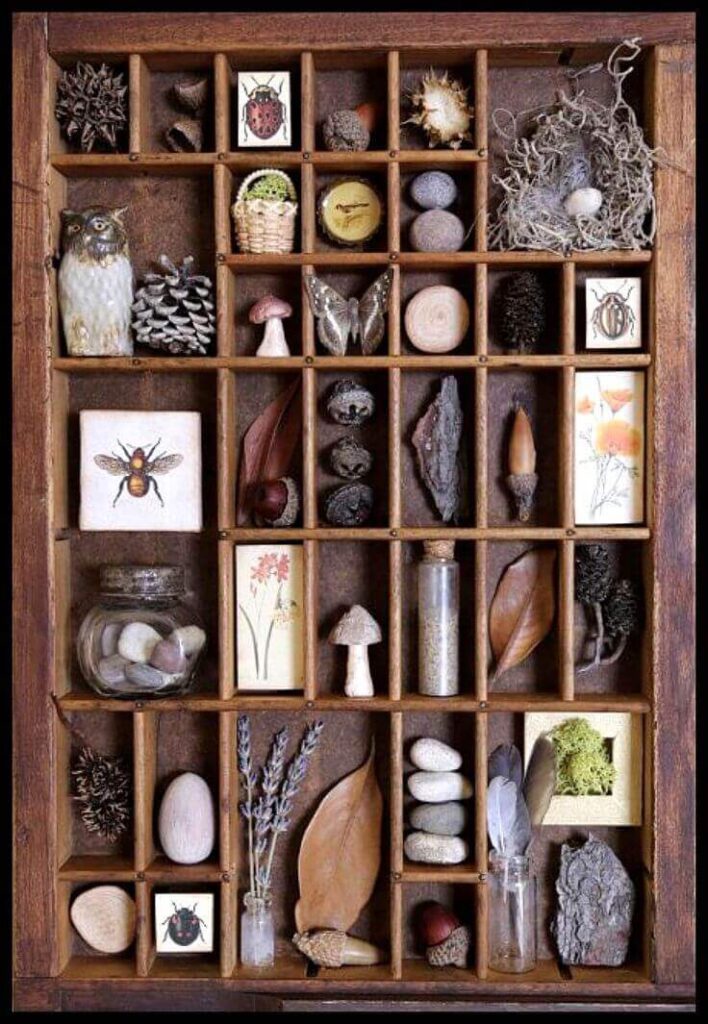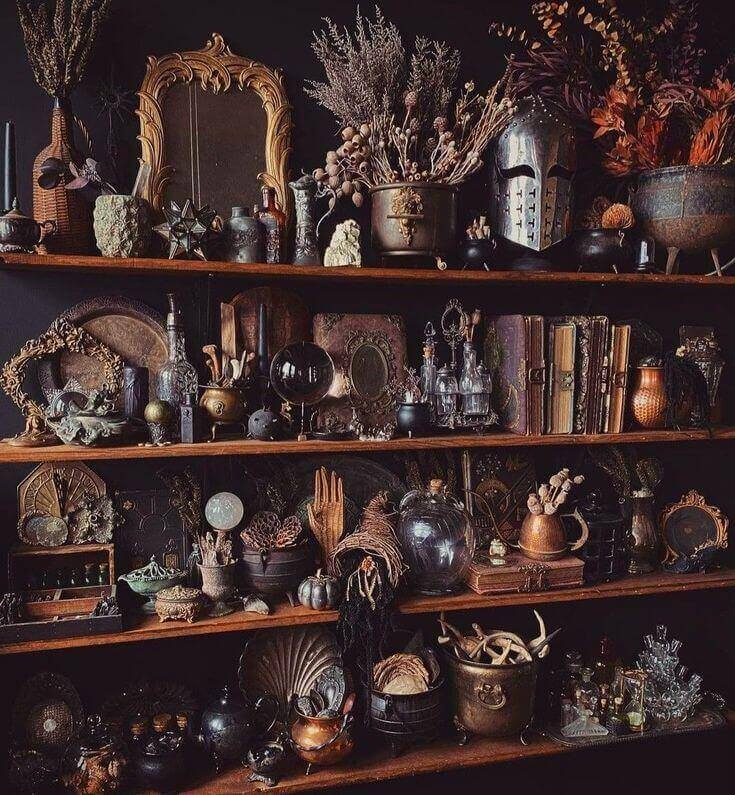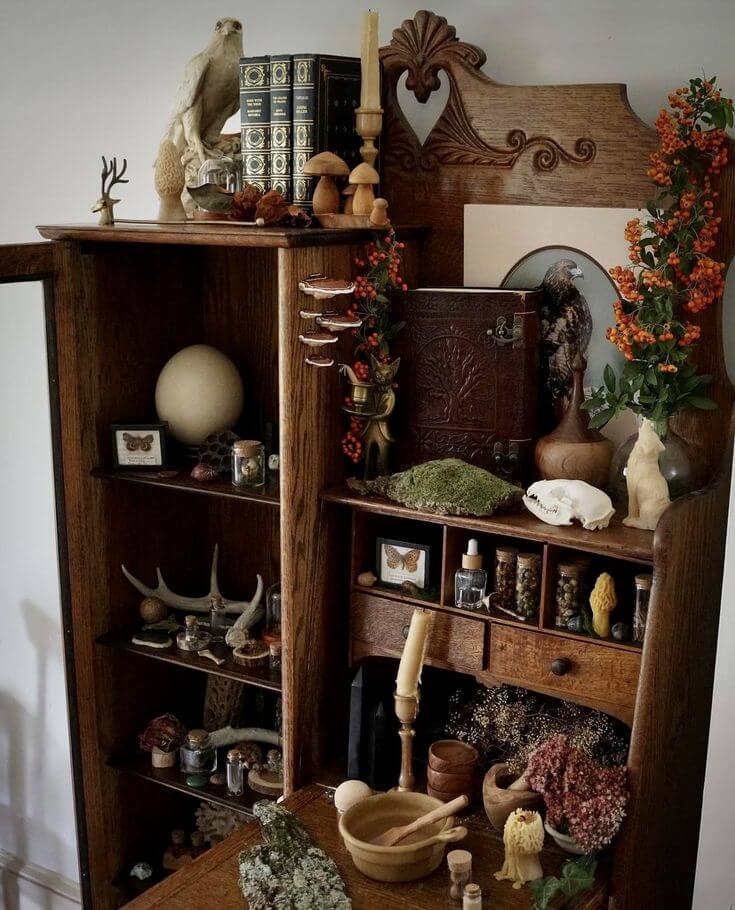If you’re like me, the idea of a “Cabinet of Curiosities” sends your imagination spinning. These collections—part art, part science, and part storytelling—date back centuries, and their charm hasn’t faded one bit. A cabinet of curiosities, also called a Wunderkammer (German for “wonder room”), was essentially the original Pinterest board for the Renaissance elite. Back then, people gathered oddities, artifacts, and natural specimens to showcase the wonders of the world in one space. Now, it’s become a unique design trend that merges history, intrigue, and a touch of whimsy.
Guillermo del Toro’s Cabinet of Curiosities is a perfect modern tie-in to this aesthetic, blending the traditional idea of a “wunderkammer” with his signature cinematic flair. If you’ve seen the Netflix anthology series or read about his personal collection of oddities, you’ll know it’s a masterclass in how the Cabinet of Curiosities concept can inspire both storytelling and design.
What are Cabinets of Curiosity

So what exactly are cabinets of curiosity? Originally, they were literal cabinets—or entire rooms—filled with fascinating objects: fossils, strange plants, preserved animals, globes, or even ancient artifacts. Wealthy collectors used them to flaunt their knowledge or intrigue their guests. Today, a cabinet of curiosities aesthetic doesn’t have to be about wealth or rare finds; it’s about creating a space that invites exploration and tells a story.
Examples of Curiosity Cabinets

Let’s paint the picture: Imagine a vintage glass cabinet filled with preserved butterflies, antique magnifying glasses, and tiny apothecary jars labeled with handwritten tags. Or a wall-mounted display of antique keys, unusual seashells, and old maps with frayed edges. Some modern examples might feature a shadow box-style display of collectibles like vintage stamps or miniature clocks. I even saw someone turn a repurposed bookshelf into their “cabinet,” filled with quirky thrift finds like porcelain figurines and old postcards.
One of my favorite examples? I once saw someone create a mini-museum using an antique wooden trunk. She filled it with brass compasses, old coins, and a few bones (ethically sourced, of course) she’d picked up on eBay. The whole setup looked like it belonged to a 19th-century explorer. It was just chef’s kiss.
What Do You Put in a Cabinet of Curiosities?

There’s no hard-and-fast rule for what belongs in your cabinet. The key is to lean into the “curiosity” aspect—choose things that make people pause and say, “Whoa, what’s that?” Here are some ideas:
Natural specimens: Think shells, minerals, feathers, or dried flowers. I once found a piece of driftwood shaped like a heart, and it earned a prime spot in my display.
Historical artifacts: Maps, coins, or letters—basically anything that feels like it has a backstory.
Scientific oddities: Old lab equipment, magnifying glasses, or even preserved specimens (if you’re into that kind of thing).
Personal treasures: Don’t forget to include items that mean something to you, like heirlooms, travel souvenirs, or keepsakes from your childhood.
The goal is to mix the macabre, the beautiful, and the mysterious. Variety is your best friend.
How to Make a Cabinet of Curiosities

Creating your own cabinet doesn’t require a trip to a high-end antique shop. Here’s a step-by-step guide based on my own trial-and-error attempts:
Find the Perfect “Cabinet”
This can be anything from a vintage hutch to a set of floating shelves. I started with a glass-front curio cabinet I found at a flea market, but even a small display box works if you’re short on space.
Hunt for Curiosities
Thrift stores, estate sales, and even nature walks are treasure troves. Once, I found a bundle of old skeleton keys at a garage sale for $5—they became the centerpiece of my display. Online marketplaces like Etsy or eBay are great for unique finds, too.
Group by Themes or Contrasts
When arranging your items, think about storytelling. For example, pair a fossilized ammonite with an old book on geology, or contrast a delicate glass orb with a rugged piece of petrified wood. The mix of textures and tones is what makes it pop.
Add Layers
Don’t just line things up like you’re stocking a store shelf. Stack books as risers, lean frames against the back wall, and drape fabrics for texture. You want the eye to wander.
Embrace Imperfection
Your cabinet isn’t meant to look like a museum exhibit. It’s supposed to feel personal and just a little chaotic. Don’t overthink it—some of my best arrangements happened when I let the pieces “find” their spots.
Del Toro has an actual, real-life “cabinet” that he calls Bleak House, a sprawling collection of the bizarre, the beautiful, and the downright creepy. It’s filled with everything from vintage medical equipment to life-size models of famous monsters, as well as art, books, and movie memorabilia. This space isn’t just storage—it’s a source of inspiration for his work. It’s his creative haven, where each object sparks a story or a piece of visual design.
How It Connects to Your Own Curiosity Cabinet

The way del Toro approaches his Cabinet of Curiosities mirrors what makes this aesthetic so captivating. It’s not about having the rarest or most valuable items; it’s about building a collection that’s deeply personal and layered with meaning. For del Toro, those objects aren’t just things—they’re portals into imagination. Similarly, your cabinet can be a mix of items that intrigue you, tell a story, or simply make you happy.
His series also embodies this concept, each episode feeling like it’s plucked from an old, dusty collection of forgotten tales. That’s the heart of the cabinet aesthetic—it’s about presenting curiosities in a way that begs for exploration. Here’s how the themes of the show connect to the aesthetic:
Storytelling Through Objects
Every episode is centered on a story, but objects often play a starring role—whether it’s a cursed storage locker or an eerie artifact. This is the same principle you can bring to your own cabinet: each item should have a story or spark curiosity.
A Sense of Mystery and Darkness
Del Toro’s aesthetic leans heavily into the macabre, which is perfect for adding depth to your collection. Think skulls, vintage medical equipment, or objects with an air of the supernatural. While your cabinet doesn’t need to be creepy, adding a touch of mystery gives it that del Toro edge.
Eclectic Inspiration
Del Toro pulls from a mix of folklore, history, and his own imagination. Similarly, your cabinet can include objects from different eras and cultures to create a layered, eclectic feel. One of my favorite finds—a miniature brass telescope—reminds me of something you’d see in one of del Toro’s sets.
Creating an Atmosphere
The series is as much about atmosphere as it is about the stories themselves. This is a great takeaway for designing your cabinet. Use lighting, backdrops, or even the cabinet itself to create a cohesive mood. For example, I added LED strip lights to mine, which gives it a soft, dramatic glow.
Tangible Inspiration from Cabinet of Curiosities
If you want to channel del Toro’s aesthetic specifically, here are a few ideas:
- Include pieces that feel cinematic, like vintage cameras, lanterns, or ornate candlesticks.
- Dive into the supernatural with tarot cards, crystal balls, or occult books (antique shops often have some great spooky finds).
- Use props to create “scenes” within your cabinet. For instance, display a globe alongside a magnifying glass and a stack of maps—it feels like the setup for a forgotten adventure.
Guillermo del Toro’s Cabinet of Curiosities isn’t just a show; it’s a mood, a vibe, and a blueprint for embracing wonder, mystery, and storytelling. If you’re looking for inspiration to build your own cabinet, there’s no better starting point.